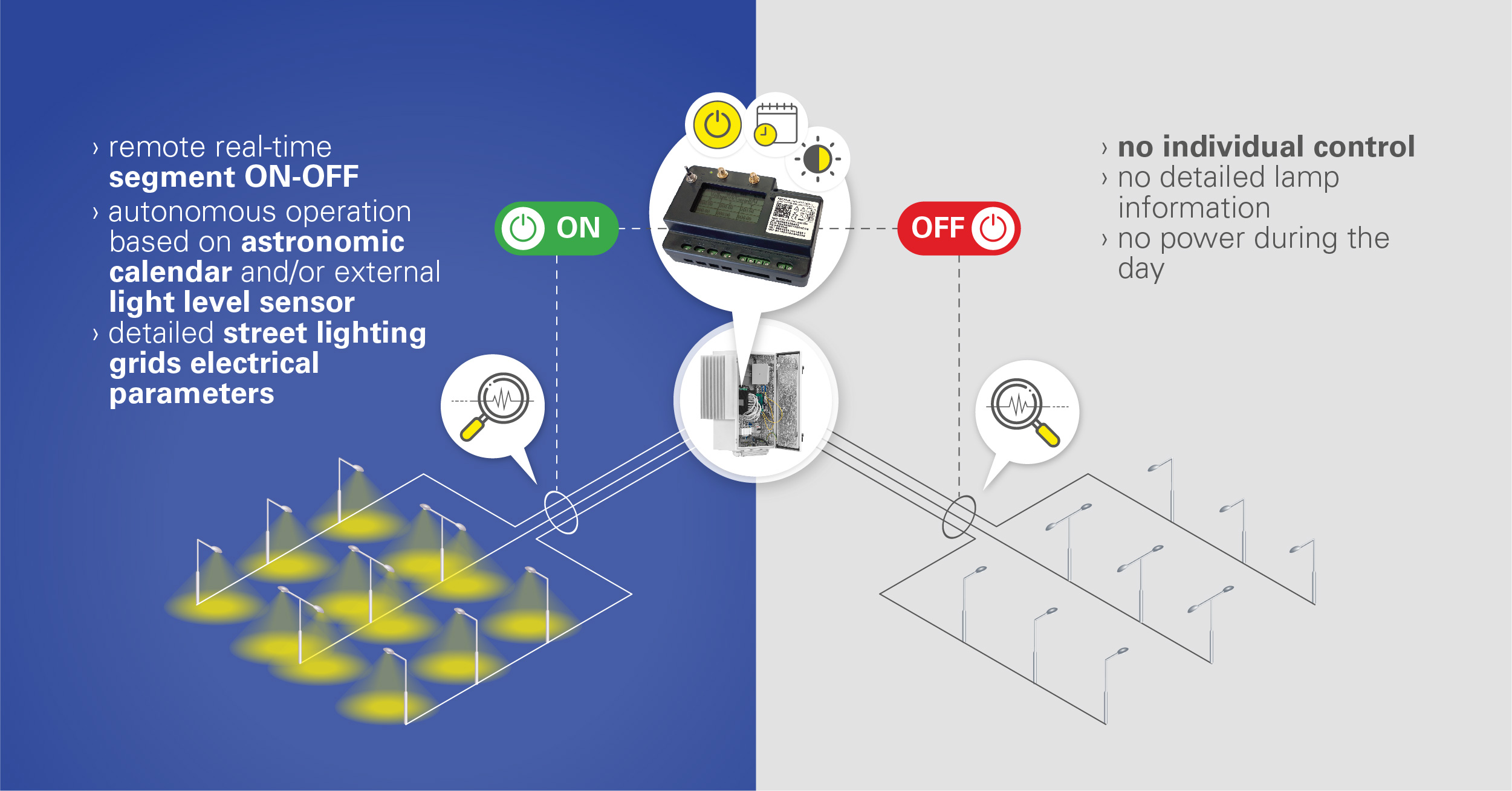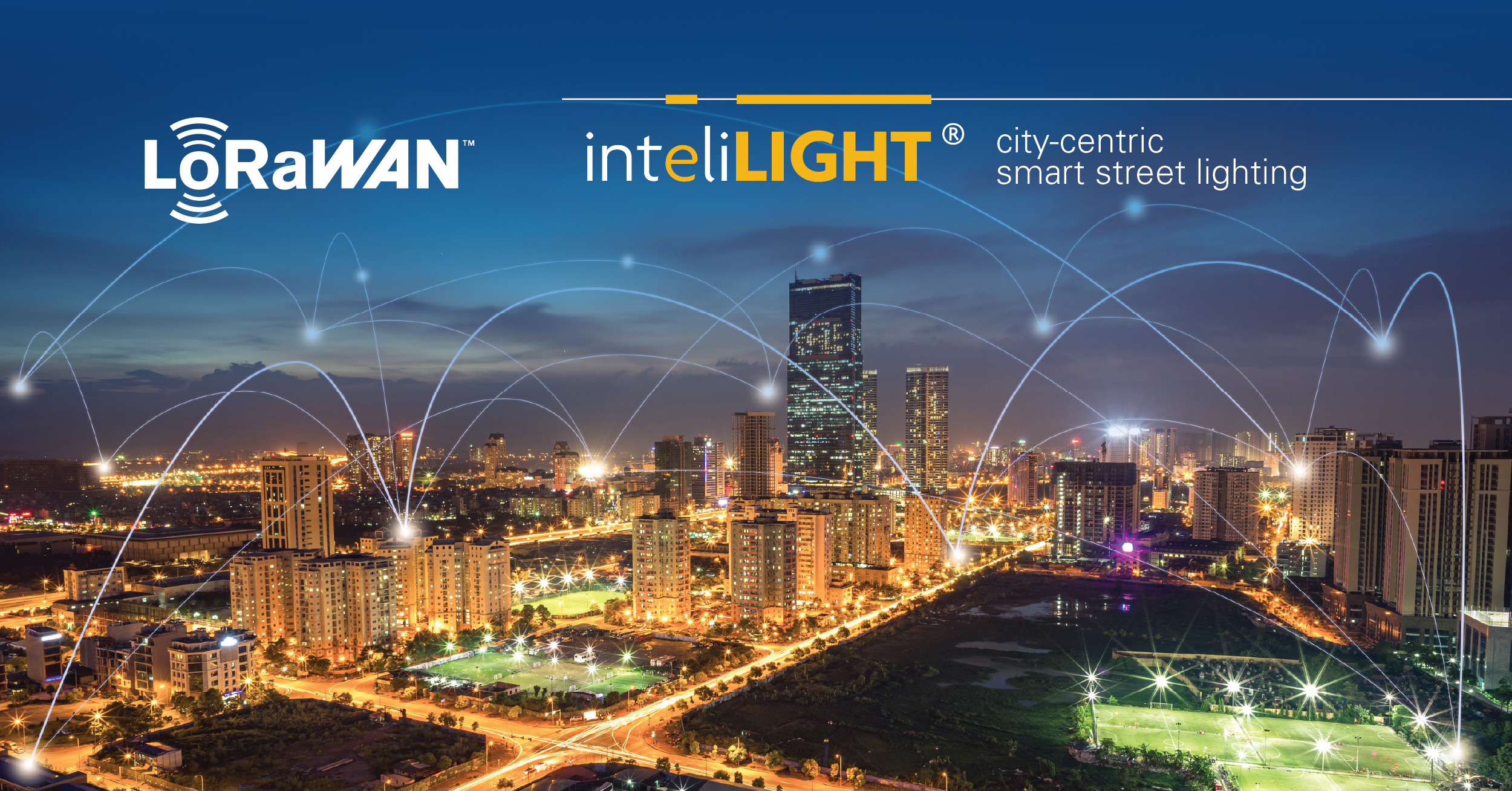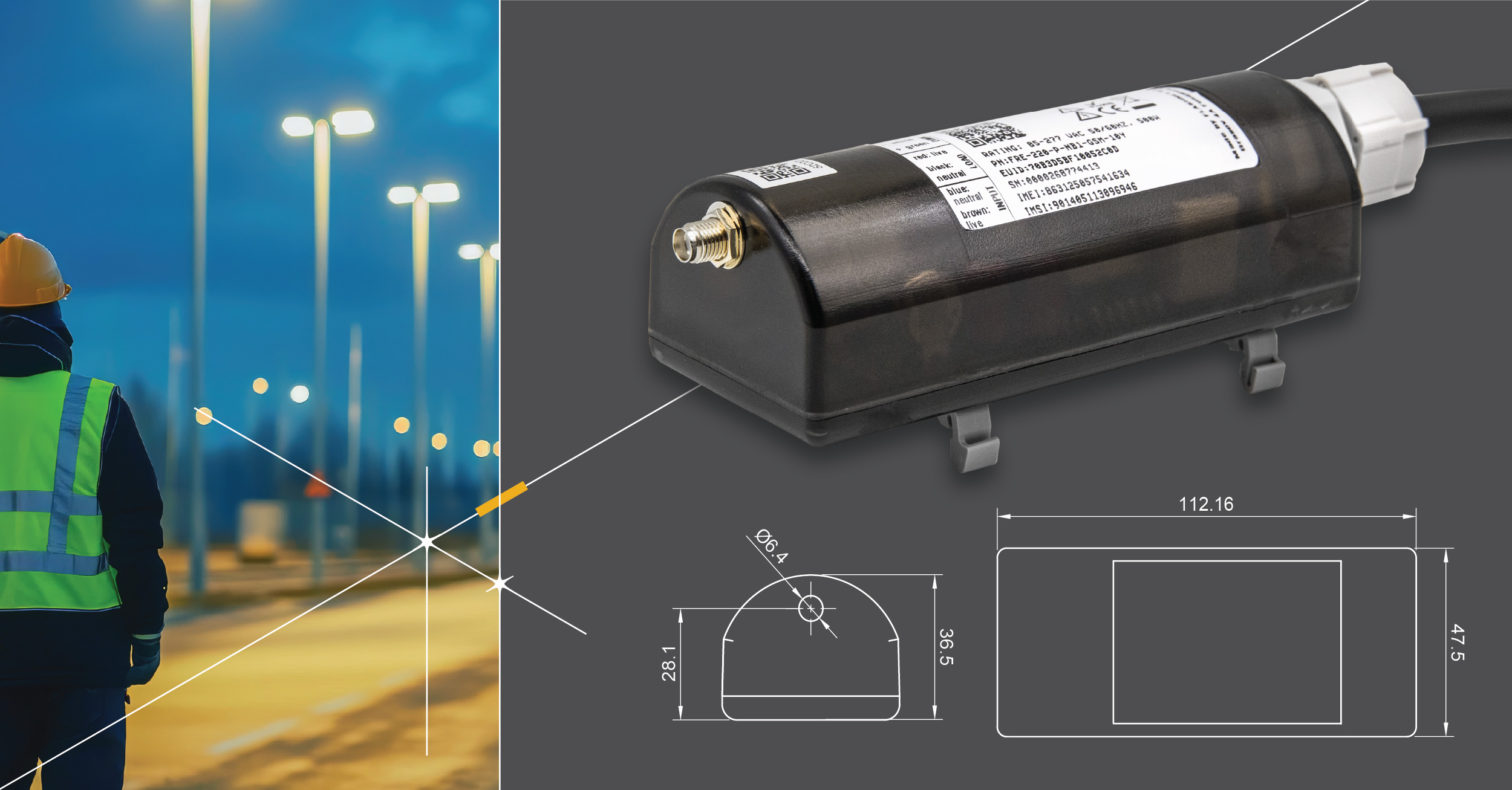Individual vs Segment Streetlight Controllers

At first, it was candles that lit up the streets. To control the street lighting, every night, a person walked every street and lit up every light.
Gas-lit lamps were the next technological breakthrough until, at the end of the 19-th century, electric lighting began its worldwide rollout and light bulbs replaced the burning streetlights. Of course, individual lighting up the lamps was replaced by an electric switch, powering ON/OFF the entire distribution network from one place.
Manual control turned into automated lighting control.
The desire for automation has long existed for lighting services, mostly using light sensors or time-based scheduling. The light turns on and off automatically throughout the city, from one central switch, but the system remains basically the same – there is no power in the lighting network during the day, which does not allow powering other applications. In addition, daily runs and citizen complaints are the only ways to detect malfunctions.
As the Internet evolved and became omnipresent, people began to imagine: what if not only people, but also objects could connect and communicate through the network? The Internet of Things concept was born, where any and all objects could communicate, either with themselves or with control systems, creating unparalleled control and convenience synergies. But how do you connect your bike or your trash bin to the Internet? It was not long until engineers solved this question: a plethora of low power (so a battery can last years) IoT communication technologies appeared almost overnight.
In this context, public lighting systems also gained extensive, never-before-available control possibilities. Today’s smart street lighting solutions include intelligent streetlight controllers that facilitate a more effective, less energy-consuming and more sustainable street lighting operation.
Individual lamp control? Or lighting segment control?
If the smart controller is installed with every lamp, then we have individual control. The system can collect information and control each lamp in the grid. However, if installed inside the feeder pillar, smart controllers enable segment-level lighting for a cluster of lamps. It’s more affordable and faster to deploy, but you lose some pretty important perks.
Both individual and segment controllers allow on/off control, either from a computer or a mobile phone, electrical grid feedback, and even completely autonomous lighting operation. However, individual lighting controllers provide more features and benefits. To name a few:
- Lamp-level dimming, better controlling energy consumption
- Real-time malfunction alert, with lamp detailed data (including localization)
- The lighting grid is powered even during the day (power and communication for other smart city devices) etc.
Challenges for upgrading to an intelligent street lighting solution
So why not upgrade to individual lamp control? One reason is that local governments are facing, among others, monetary shortcomings. Although LED lamps together with smart control bring significant energy savings, budgets are not suited for the city-wide streetlamp renewing investment. The streetlight management projects can become expensive and exhausting multi-year investments.
Even so, there are many upsides to investing in a modern street lighting infrastructure. With detailed data at hand, municipalities can not only save costs on energy and maintenance, but also ensure faster outage responses, and make more informed decisions regarding the development of the city’s public lighting and Smart City Platform.
- Limited control options for older infrastructure retrofitting
- Existing power supply issues (voltage fluctuations, same lighting segment powered from different sources)
- Lack of inventory and lamp information
- High hardware and implementation costs
- Long deployment times
- Lack of integration with other city systems
- Vendor-locked solutions and lack of scalability
Is it a good idea to choose segment control for your smart street lighting project?

A segment represents a fraction of a public lighting network and can comprise a cluster of up to 200 streetlight lamps (nodes) controlled from the same feeder pillar. The power supply network is structured in such a way that the segment controller turns the power on/off for all the poles connected to the respective panel, sometimes correlated with a central switch, a light level sensor or a timer.
A street lighting controller placed in the feeder pillar (segment control) comes with immediate benefits:
But there are a few shortcomings:
Could an Individual lamp controller be more suitable for your smart lighting project?

Individual lamp control is handled via luminaire controllers which have lamp-level functionality and intelligence, allowing individual ON/OFF and dimming control. Besides these functions, luminaire controllers carry out measurements and analysis of different electrical parameters at streetlight level: under/overpower monitoring, voltage monitoring, phase failure and consumption mismatches.
Furthermore, malfunctions are reported in real-time to the street lighting control software and maintenance teams, long before citizens even notice.













